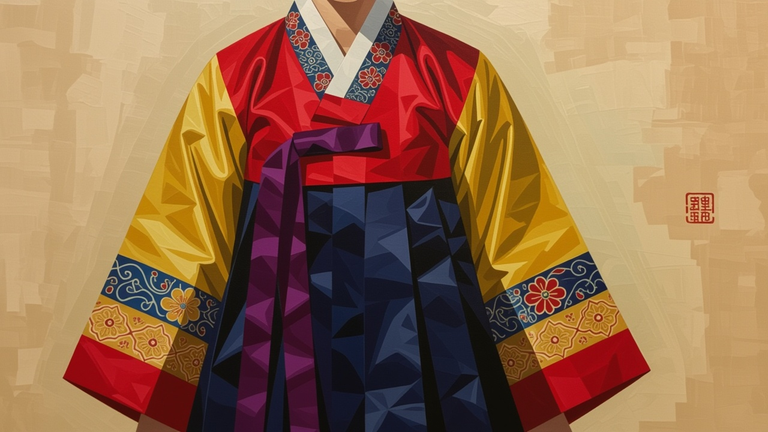Hanbok - One of Korea’s Most Valuable Cultural Treasures


In the past few months, I have been digging deeper into the Korean culture, partly because I have been watching more of their movies and dramas that are now getting global attention. One of the things that kept catching my eyes is the colorful traditional outfit I see in historical dramas, and after doing some research, I found out it is called Hanbok.
Hanbok is one of Korea’s most valuable and respected cultural treasures. It is not just clothing, it carries history, identity, and pride of the Korean people. The design of the hanbok is very unique, it is made of vibrant colors and simple lines without pockets. For men, the hanbok consists of a jacket known as jeogori and loose pants called baji. For women, it includes the jeogori as well, paired with a full, high-waisted skirt called chima.
From my findings, the hanbok has been worn for over 1,600 years, and while in the past it was everyday clothing, today it is worn mostly during festivals, weddings, holidays like Chuseok (Korean Thanksgiving), and Seollal (Lunar New Year). What fascinates me the most is that every color of the hanbok can have meaning. For example, bright colors like red and yellow were often worn by children or young women, while middle-aged and elderly people preferred softer, darker tones. In traditional times, your hanbok color could even tell your social status or marital status.
Another thing I discovered is that hanbok was designed with comfort and movement in mind. The wide sleeves and loose fit make it easy to move around, which makes sense when you think about how people in the olden days needed clothes that were both practical and elegant. But beyond comfort, the hanbok’s beauty is undeniable. The long flowing lines, the harmony of colors, and the balance between simplicity and elegance make it a timeless piece of fashion.
What I find more interesting is how Korea has managed to keep the hanbok alive even in modern times. Designers now create modernized versions of hanbok for casual wear, blending the old designs with new styles. In some K-dramas, you can even see characters wearing hanbok-inspired outfits in present-day settings. Tourists visiting Korea also often rent hanbok to wear when visiting palaces like Gyeongbokgung, which adds to the cultural experience.
 photos gotten from peakd.com
photos gotten from peakd.com

Through my research, I also learned that wearing hanbok is not just about fashion. It is a way for Koreans to honor their ancestors, celebrate traditions, and connect with their heritage. Even in global events, hanbok is used to represent Korea’s identity. For example, Korean athletes have worn hanbok during Olympic opening ceremonies, and K-pop idols sometimes perform in modern hanbok on stage.
For me, learning about hanbok has opened my eyes to how clothing can be a form of history. It tells the story of the people, their values, and their way of life. I believe that is why hanbok has remained such a valuable part of Korean culture despite modernization.
As I continue to explore Korean culture, I realize there is so much more to learn beyond what we see on TV. The hanbok is just one example of how rich and beautiful their traditions are. It is more than just fabric and color, it is a living symbol of Korea’s soul.
Note: this post was written with a lot of research done by me, please if there is anything I didn't get correctly, kindly let me know in the comments section
Happy weekend to everyone TGIF




View or trade
LOHtokens.@eliza01, You have received 1.0000 LOH for posting to Ladies of Hive.
We believe that you should be rewarded for the time and effort spent in creating articles. The goal is to encourage token holders to accumulate and hodl LOH tokens over a long period of time.
An article about hanbok sounds interesting. However, the first photo seems to be of Japanese clothing.
Wow, didn't know, the culture looks familiar, thanks I appreciate
I'm using Hive.blog instead of PeakD. Does this mean that PeakD has built-in AI-image generation? Or what is the exact origin of the images?
In case it is AI, it would be rather self-explanatory why the first picture looks rather Japanese according to @yeouido.park - simply too little or bad training of the image-gen model I suppose.
Overall an interesting post, thumbs up!
Yea, the image didn't come out the way I want, but it's a mistake on the AI image generator part😆. And yes peakd has an AI image generator based on the prompt given
Yea, the image didn't come out the way I want, but it's a mistake on the AI image generator part😆. And yes peakd has an AI image generator based on the prompt given